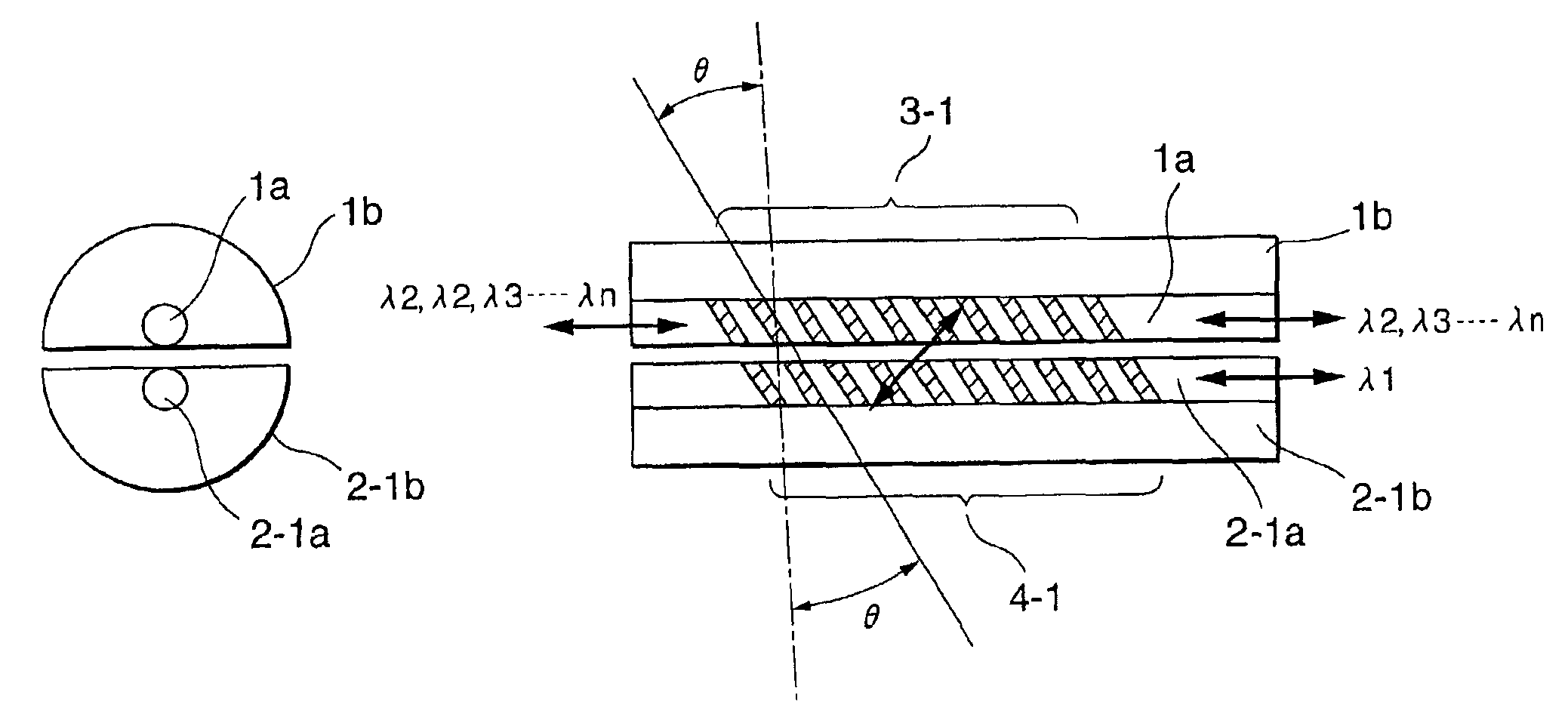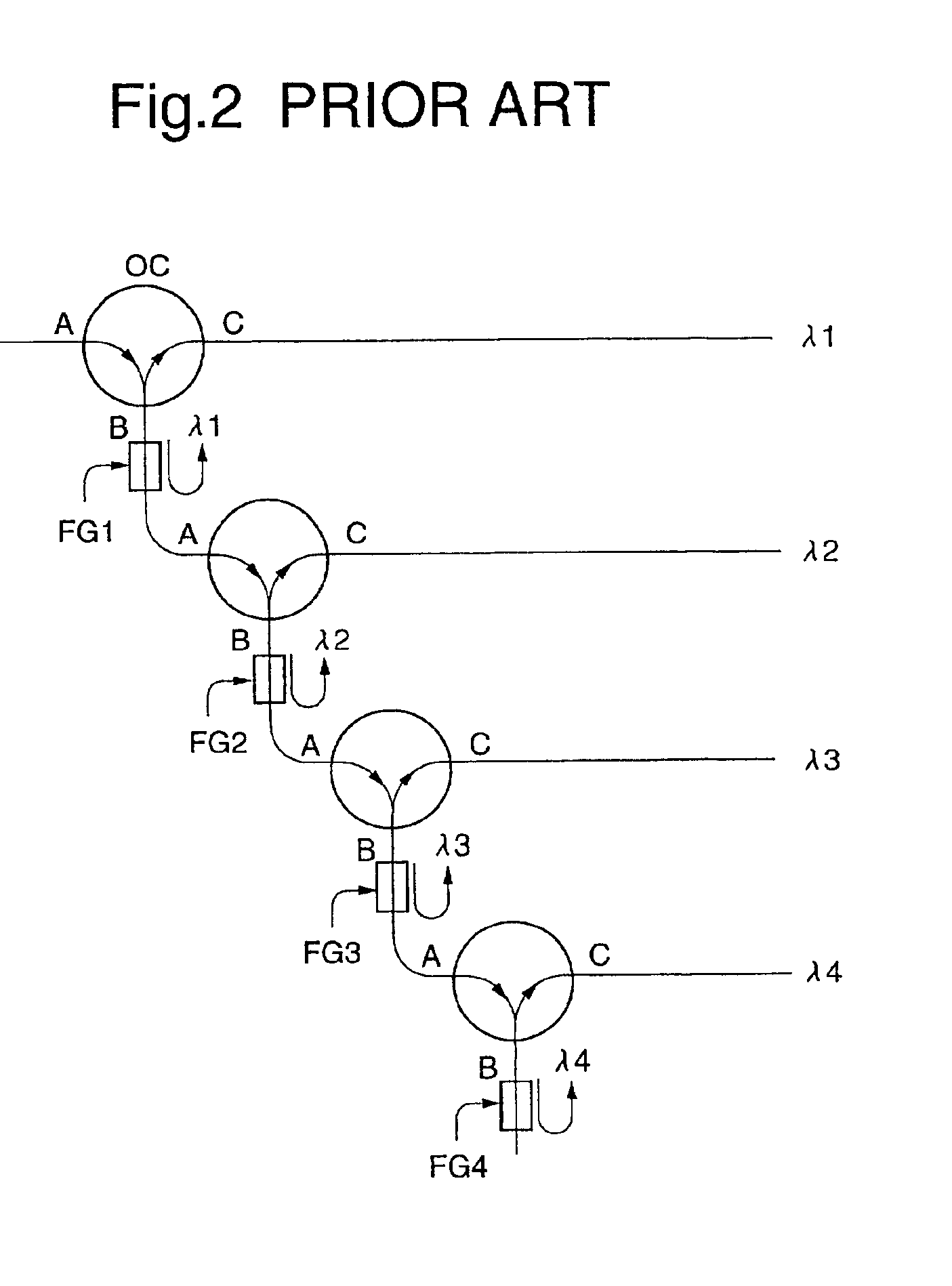Fiber-type optical coupler with slanting Bragg diffraction gratings and optical parts and apparatuses using the same
a fiber-type, optical coupler technology, applied in the direction of optics, optical waveguide light guides, instruments, etc., can solve the problems of increasing optical insertion loss, inability to be ignored, and inability to help, so as to achieve high reliability, stable and economical
- Summary
- Abstract
- Description
- Claims
- Application Information
AI Technical Summary
Benefits of technology
Problems solved by technology
Method used
Image
Examples
third embodiment
Next, a further embodiment of the present invention will be described. Before that, further unique properties of basic components of the present invention will be described. This description will help understand the third embodiment and thereafter that utilize the unique properties.
The basic components of the present invention are, so to speak, a set of Bragg diffraction optical couplers of configuration wherein two optical fibers forming a tilted Bragg grating in the core section are placed with their optical axes parallel and the respective cores close in the area forming mutual tilt gratings. In the placement related to a propagation direction of guided mode light and a tilt angle of the Bragg grating described in detail so far, this device causes Bragg diffraction coupling from the guided mode for letting it in from the left terminal of one primary optical fiber and advancing it rightward in the core section to the guided mode for also advancing it rightward in the other second ...
sixth embodiment
Next, an example of configuring an optical circulator is shown as the present invention. Here, an example of three ports is described. As for operation of a three-terminal circulator in principle, as shown in FIG. 2, it operates so that a signal inputted to the terminal A is outputted to the terminal B, an input signal to the terminal B is outputted to the terminal C, and an input signal to the terminal C is outputted to the terminal A.
If an optical circulator performing the same operation as this is implemented by utilizing the nonreciprocity of the Bragg diffraction optical coupler by the tilt grating of the present invention, it can be configured as shown in FIG. 17 as an example. 201, 202 and 203 in the drawing are Bragg diffraction optical couplers supported by two V-groove substrates on the topside and underside, where the left terminal of the upper optical fiber 204 of the Bragg diffraction optical coupler 201 is the input terminal A, the left terminal of the upper optical fi...
PUM
 Login to View More
Login to View More Abstract
Description
Claims
Application Information
 Login to View More
Login to View More - R&D
- Intellectual Property
- Life Sciences
- Materials
- Tech Scout
- Unparalleled Data Quality
- Higher Quality Content
- 60% Fewer Hallucinations
Browse by: Latest US Patents, China's latest patents, Technical Efficacy Thesaurus, Application Domain, Technology Topic, Popular Technical Reports.
© 2025 PatSnap. All rights reserved.Legal|Privacy policy|Modern Slavery Act Transparency Statement|Sitemap|About US| Contact US: help@patsnap.com



